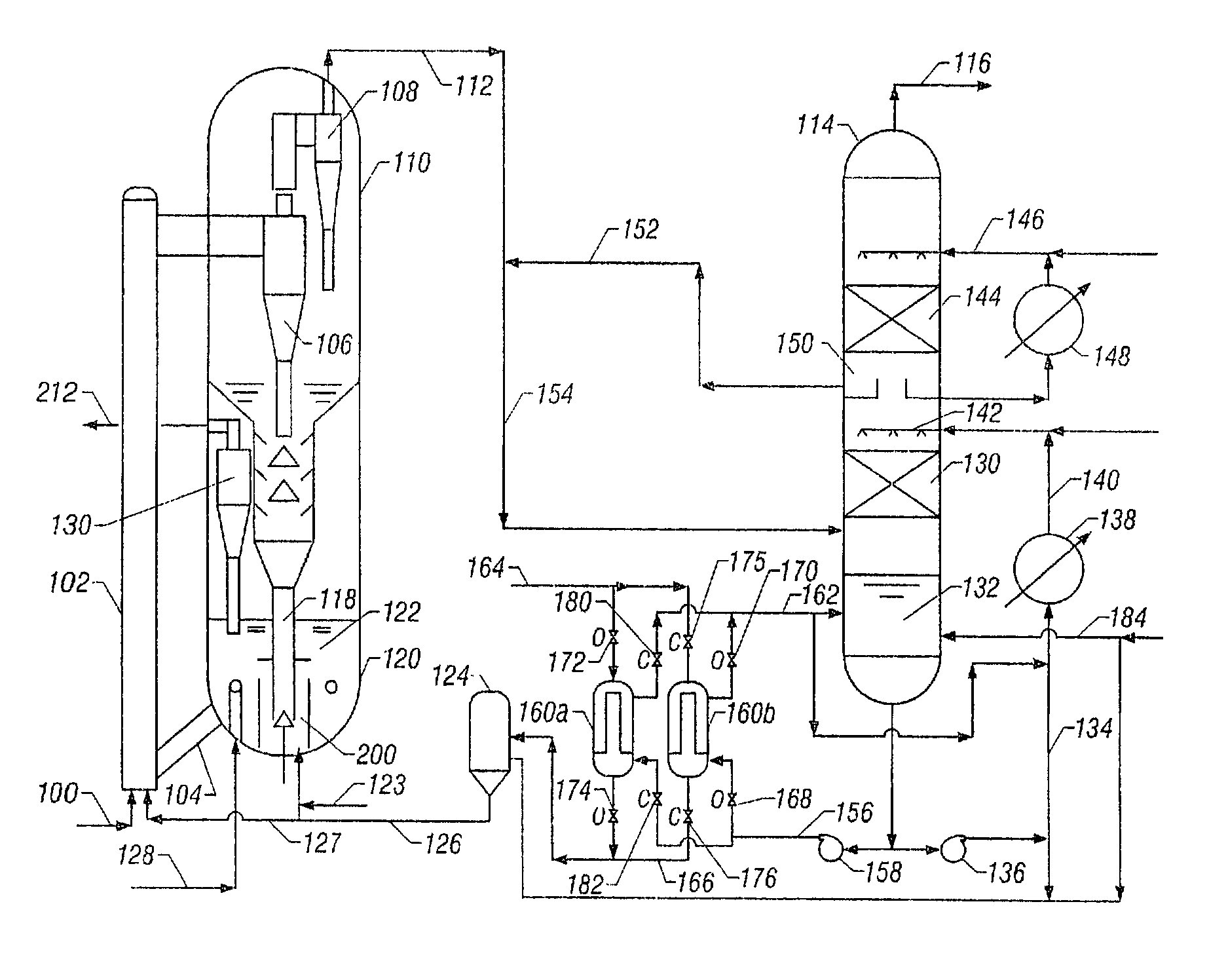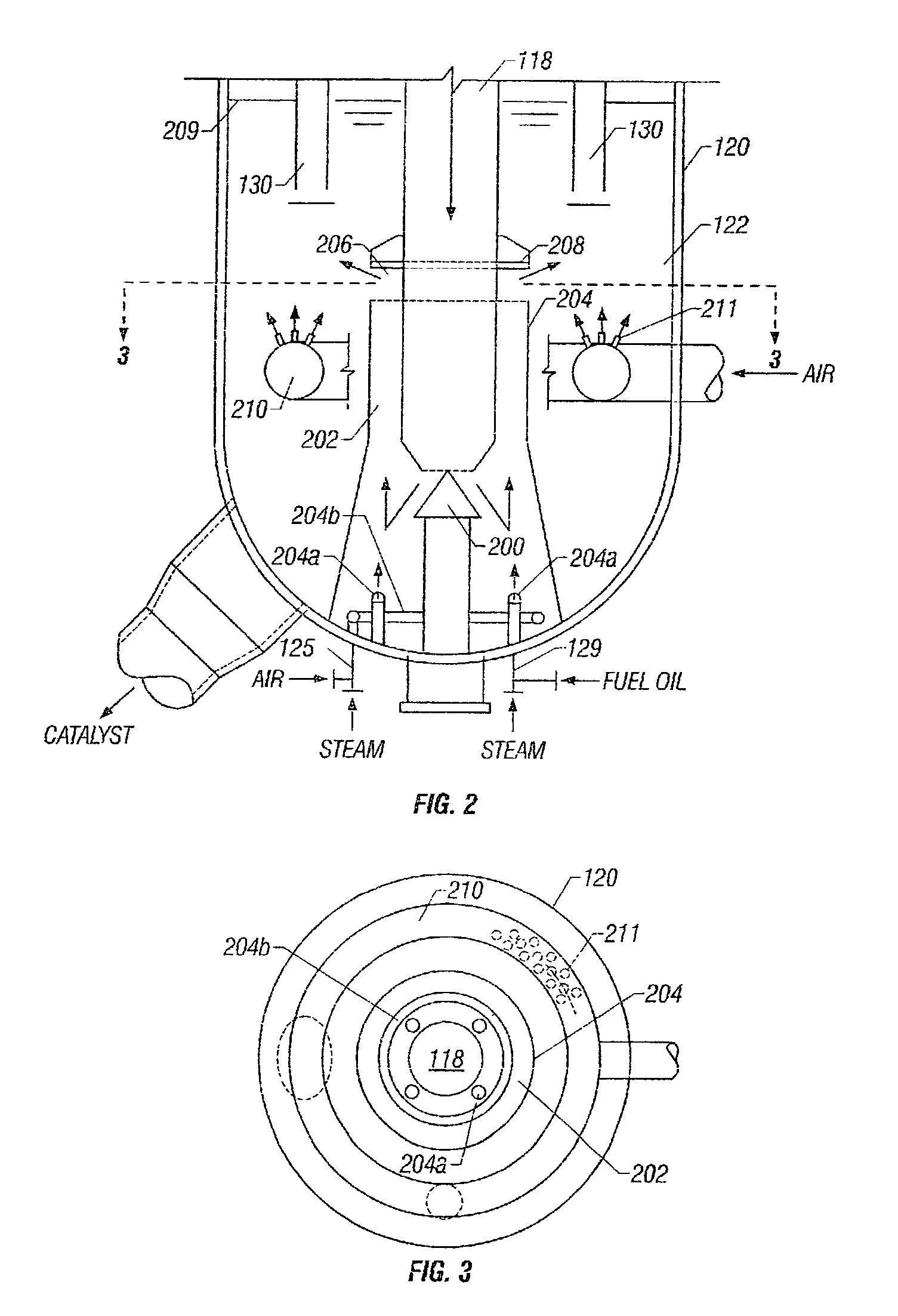Catalyst recovery from light olefin FCC effluent
- Summary
- Abstract
- Description
- Claims
- Application Information
AI Technical Summary
Benefits of technology
Problems solved by technology
Method used
Image
Examples
Embodiment Construction
[0027]The present invention is a method and system for recovering fines from the light FCC effluent and regenerating spent catalyst. As used in the specification and claims, a light FCC unit or process is one in which the hydrocarbon feedstock to the FCC riser has a very low resid content such that there is insufficient carbon deposited on the catalyst to sustain combustion for regeneration without a supplemental fuel source, and there is insufficient fuel oil in the riser effluent for conventional slurry oil recovery, i.e. less than 2 weight percent of the hydrocarbons in the reactor effluent gases from the riser have an atmospheric boiling point above 550° F.(288° C.). However, if this amount is greater than 2 weight percent, the filters can optionally be bypassed and this material used as the slurry. The FCC process encompasses a fluidized catalytic reaction system, converting a light hydrocarbon feed stream preferably having a high olefin content to a product slate rich in propy...
PUM
| Property | Measurement | Unit |
|---|---|---|
| Flow rate | aaaaa | aaaaa |
| Heat | aaaaa | aaaaa |
Abstract
Description
Claims
Application Information
 Login to View More
Login to View More - R&D
- Intellectual Property
- Life Sciences
- Materials
- Tech Scout
- Unparalleled Data Quality
- Higher Quality Content
- 60% Fewer Hallucinations
Browse by: Latest US Patents, China's latest patents, Technical Efficacy Thesaurus, Application Domain, Technology Topic, Popular Technical Reports.
© 2025 PatSnap. All rights reserved.Legal|Privacy policy|Modern Slavery Act Transparency Statement|Sitemap|About US| Contact US: help@patsnap.com



